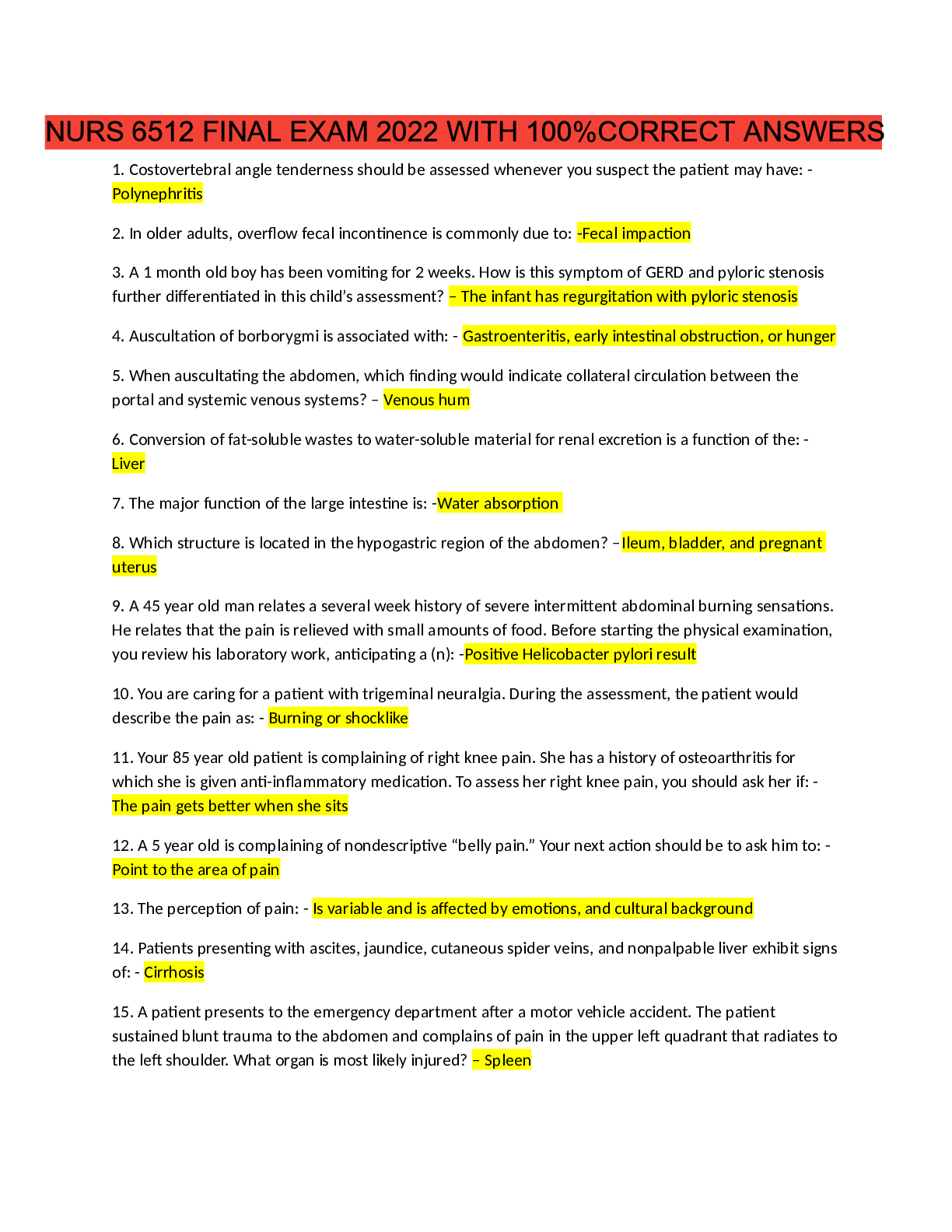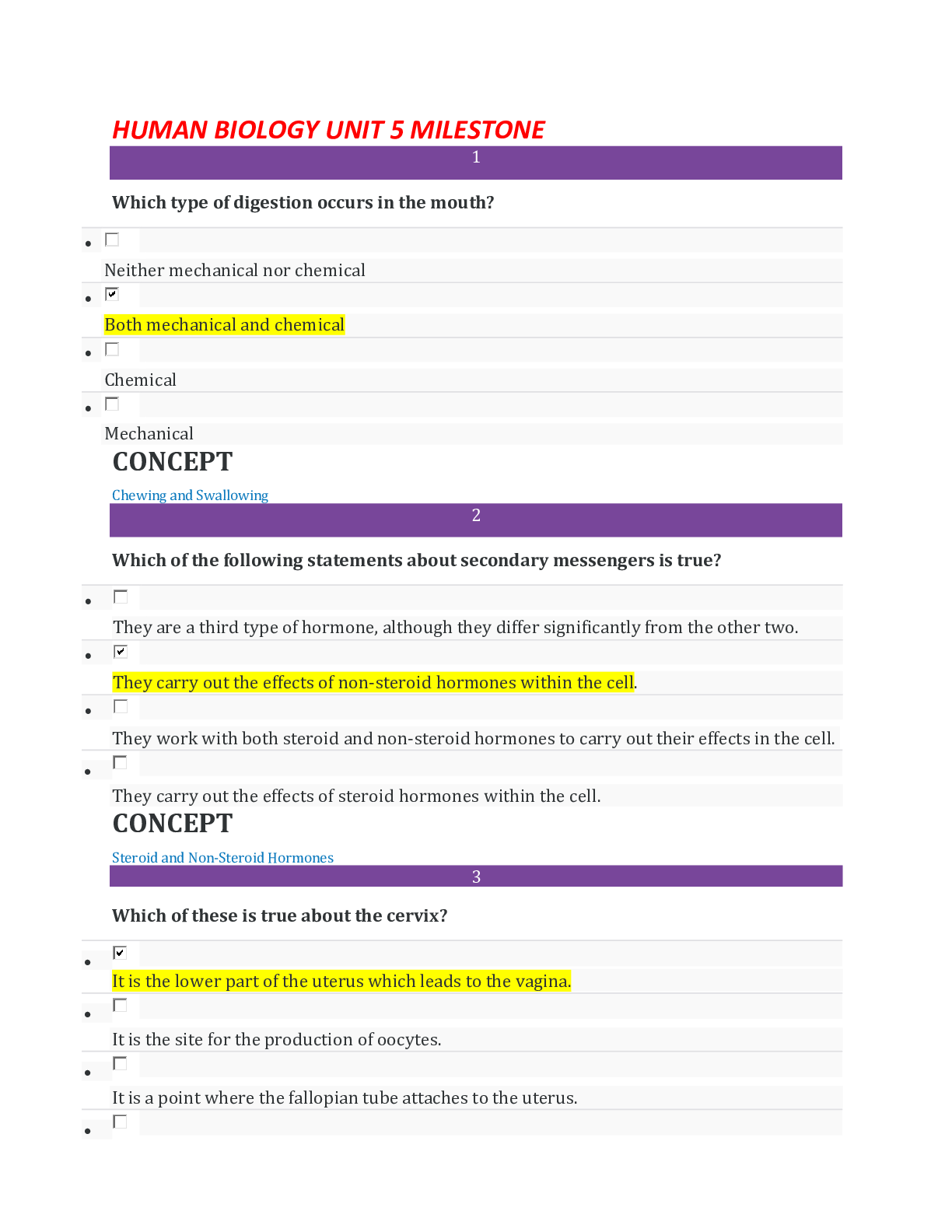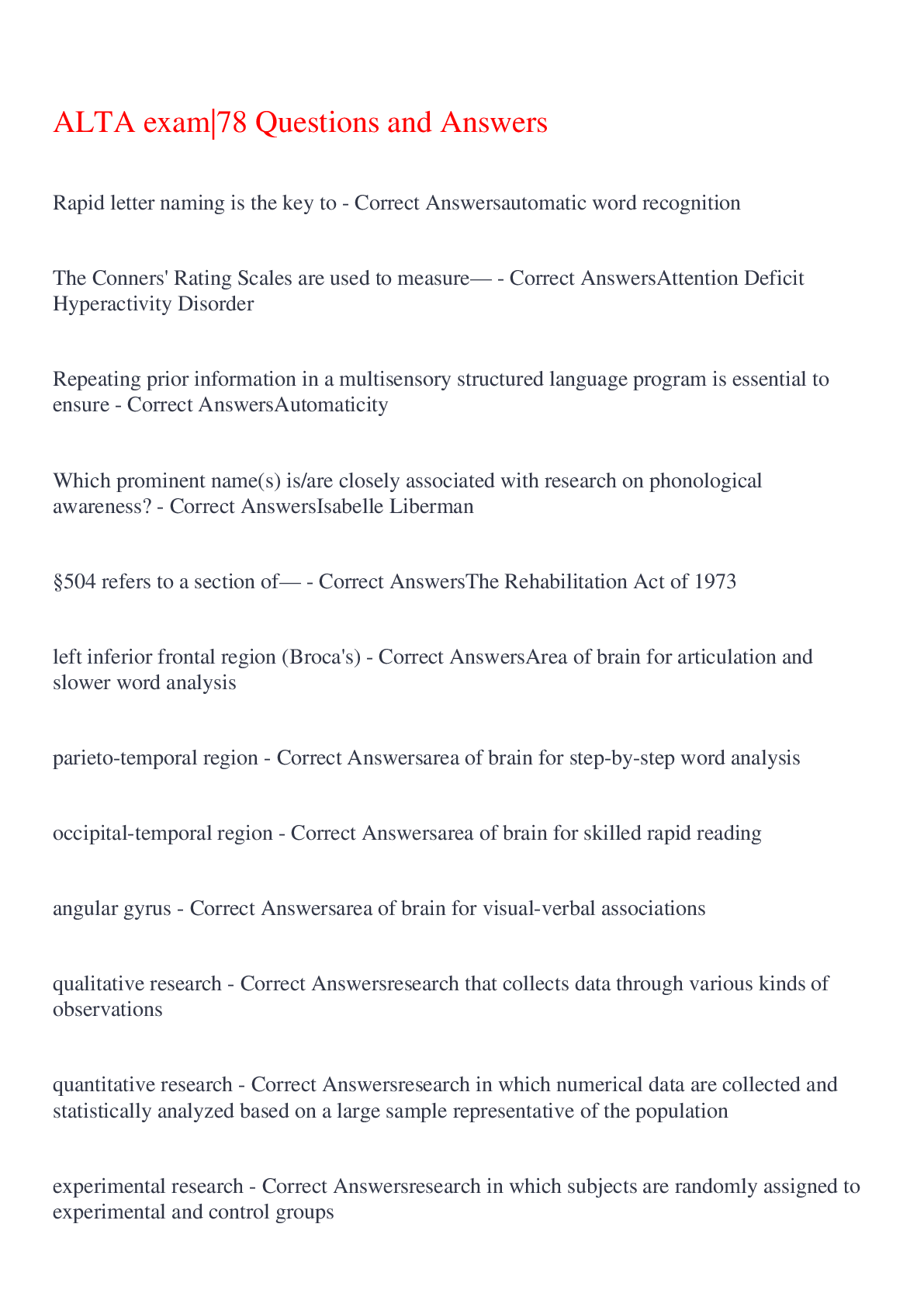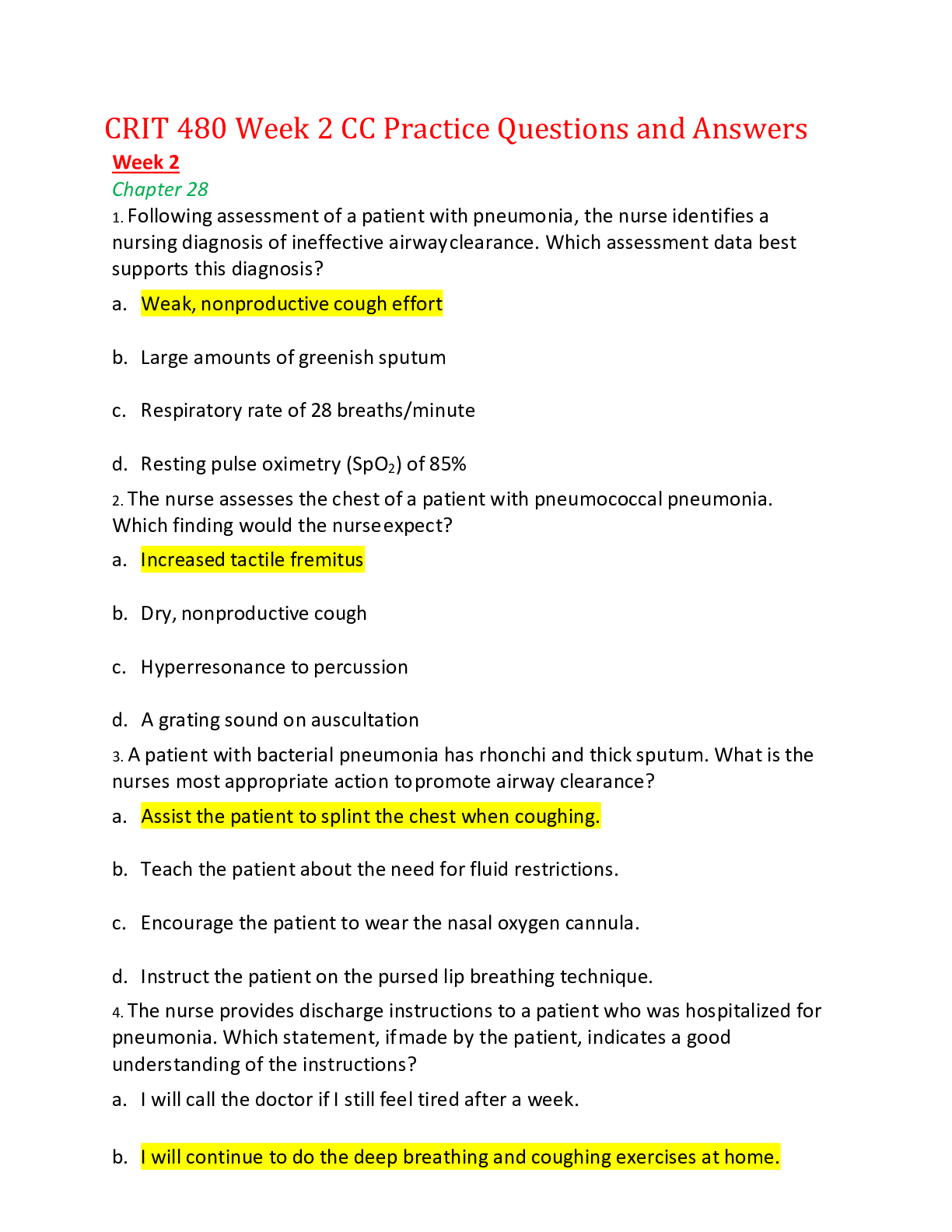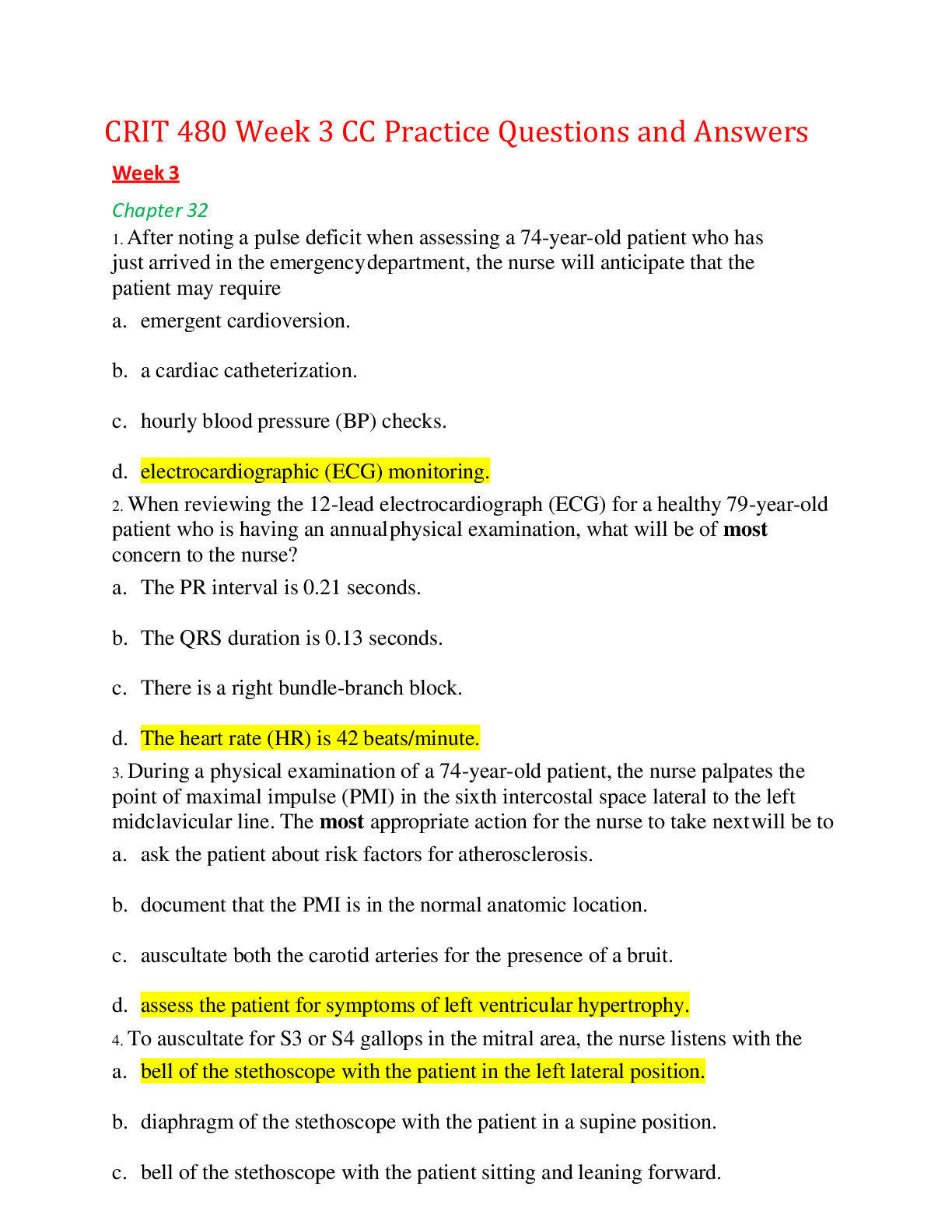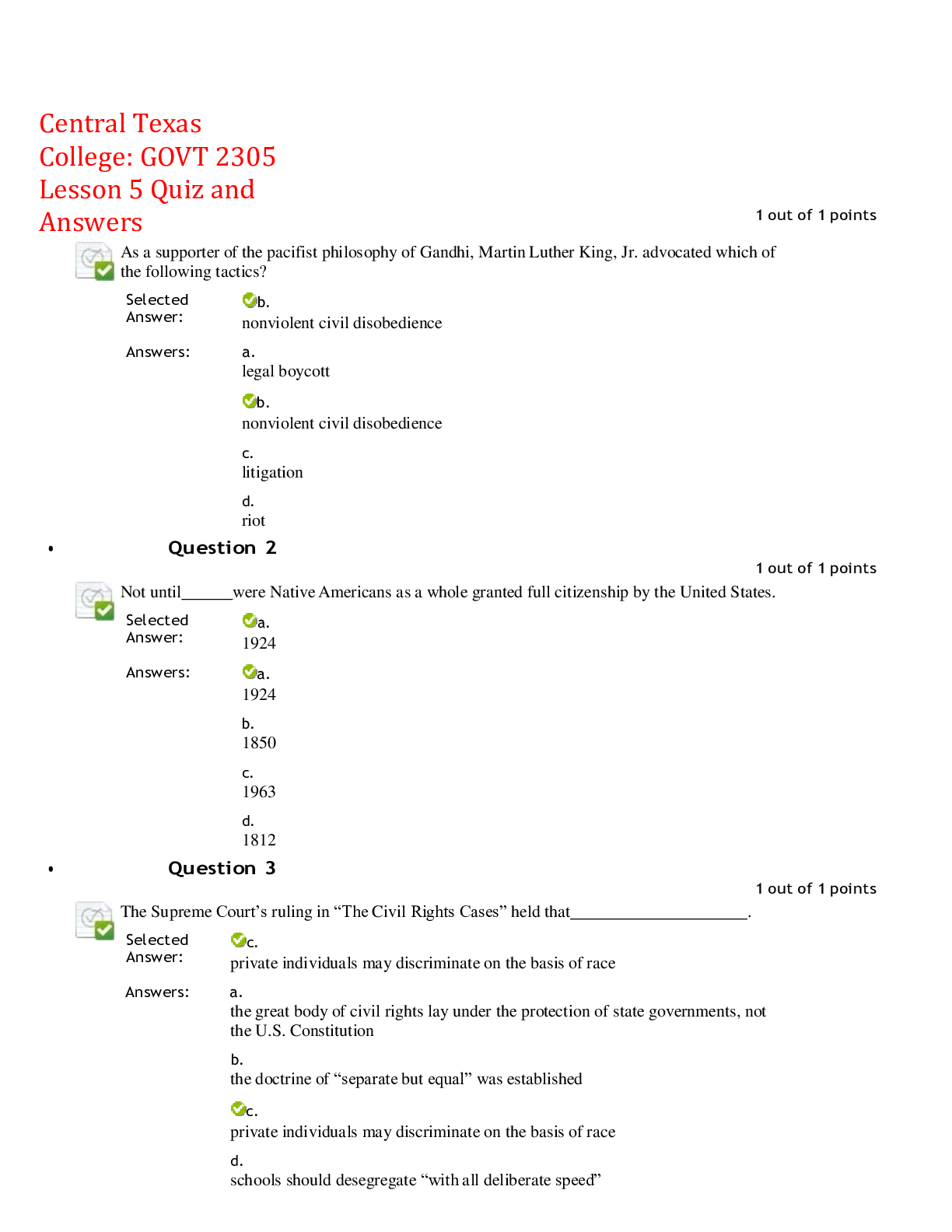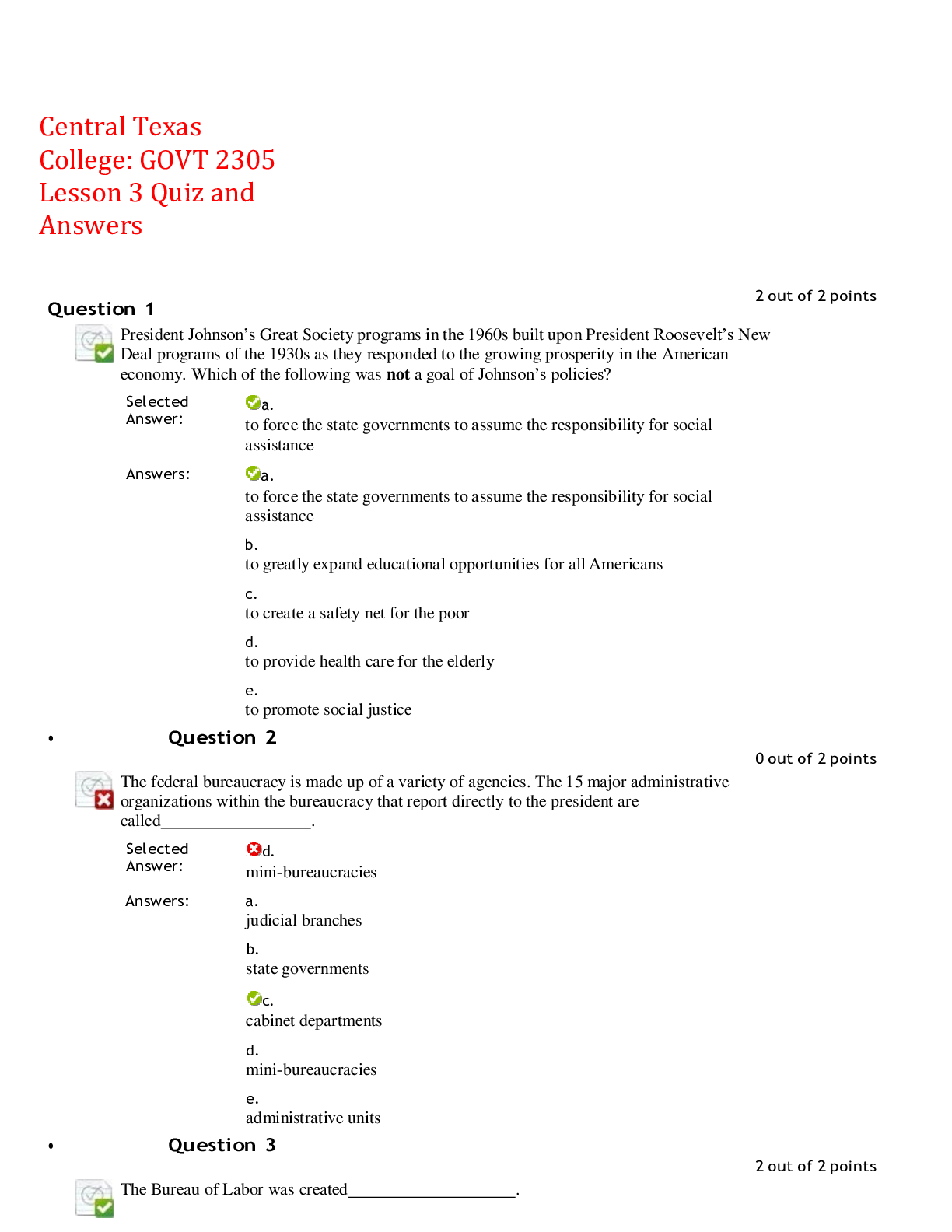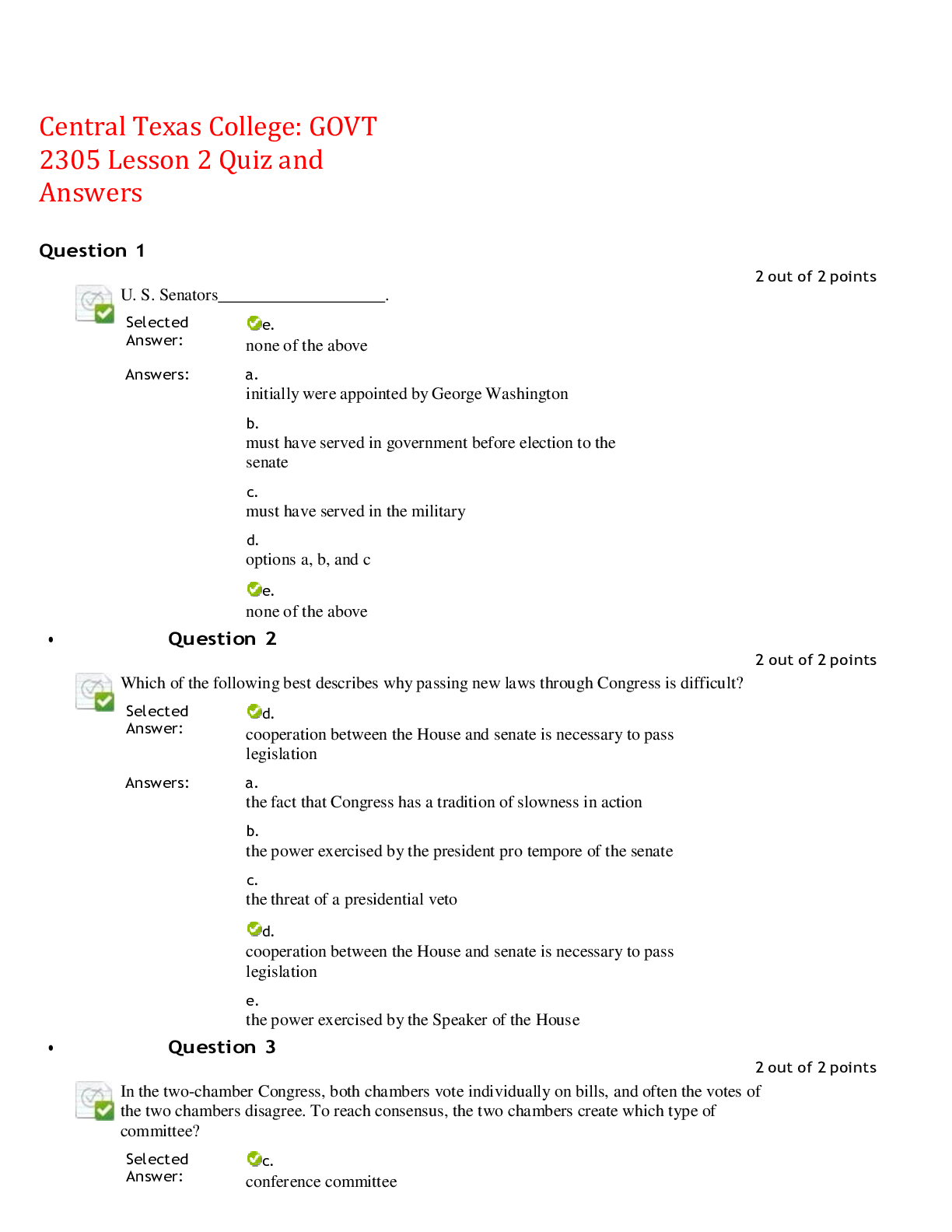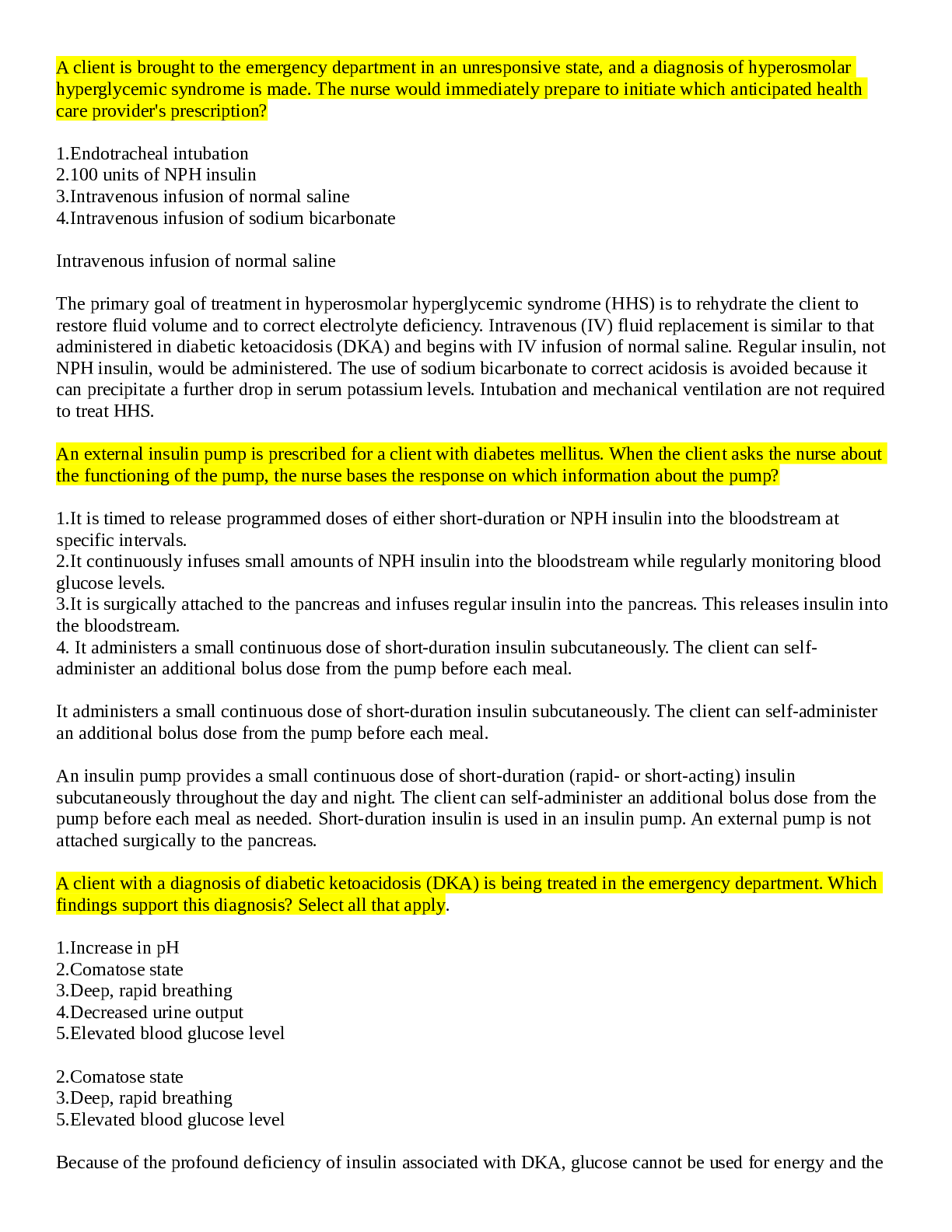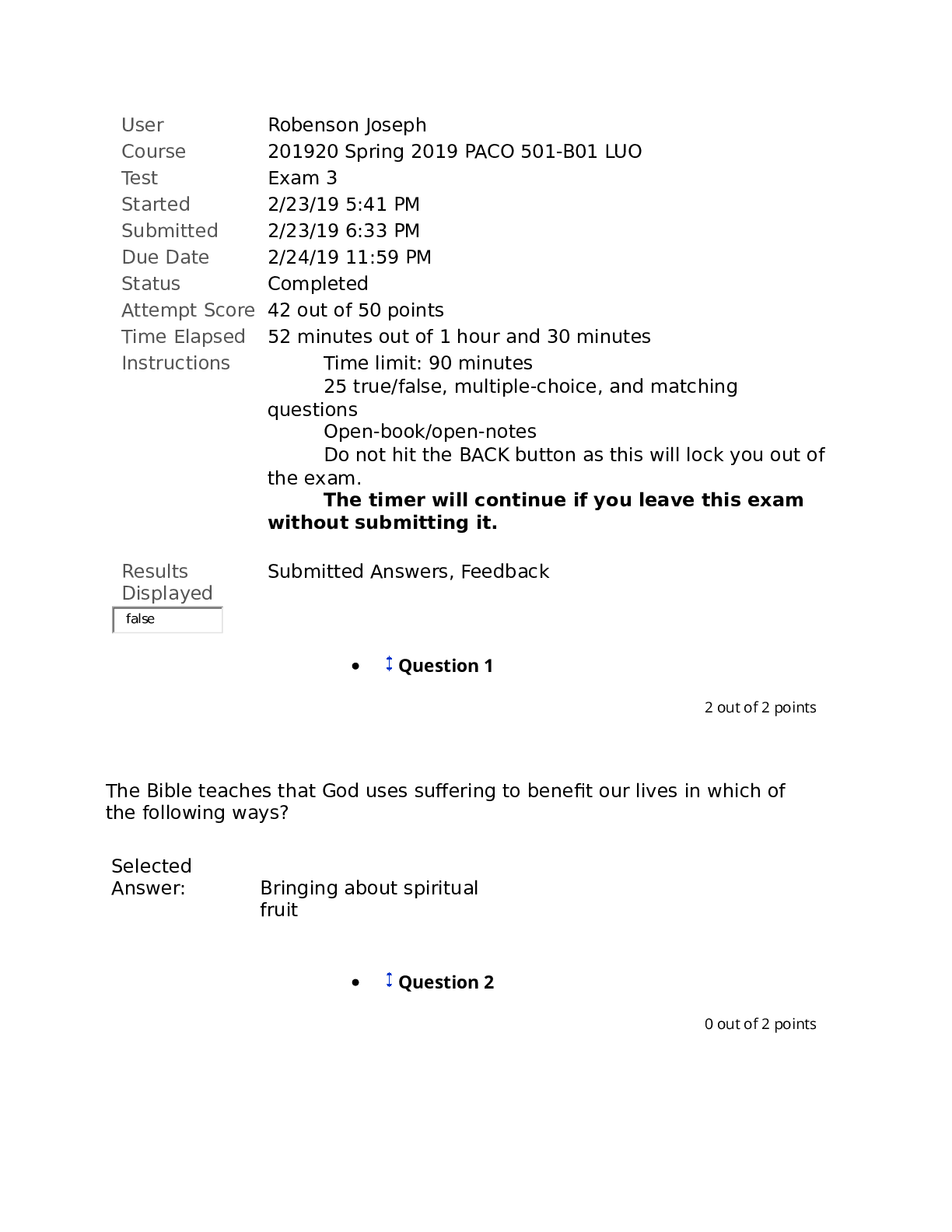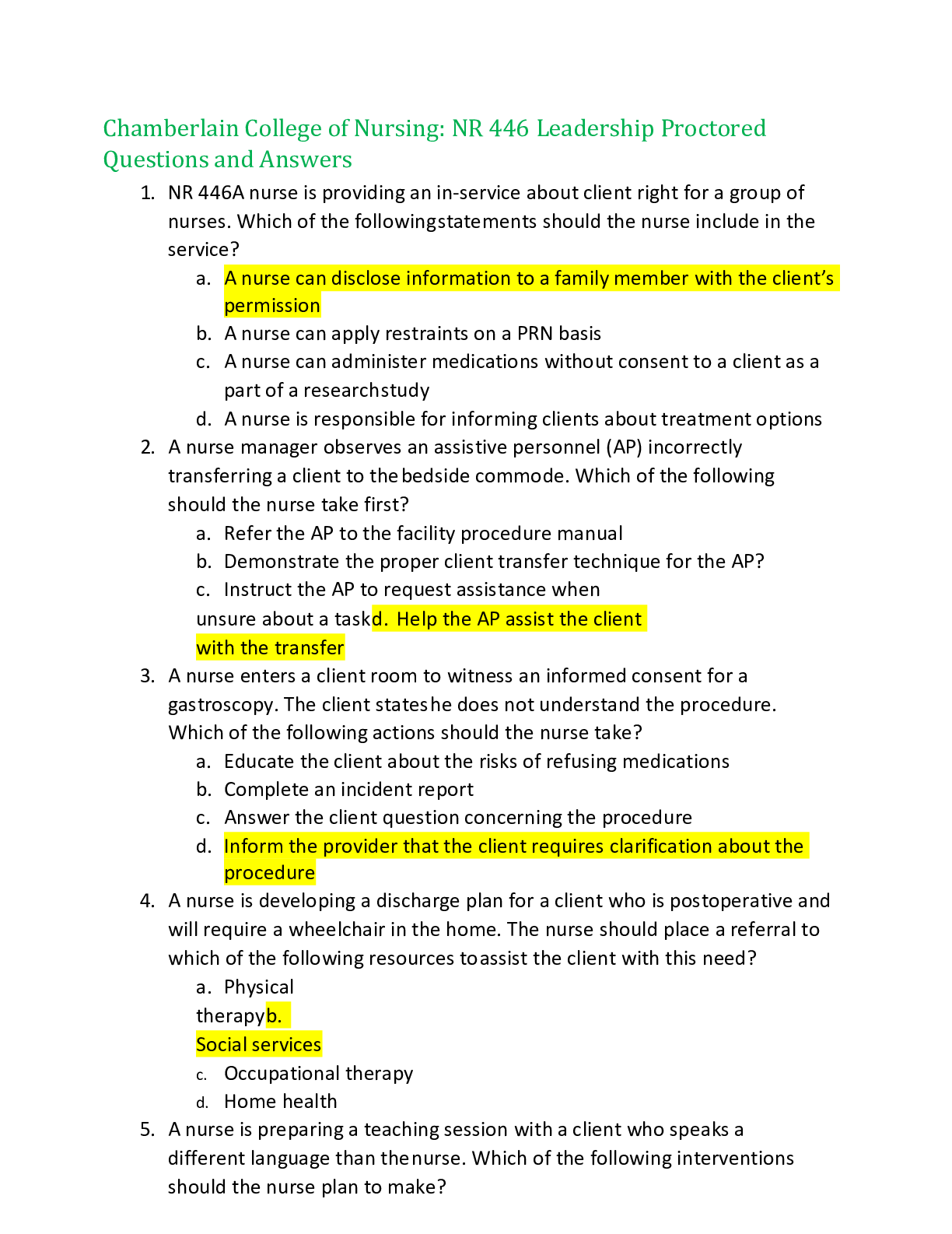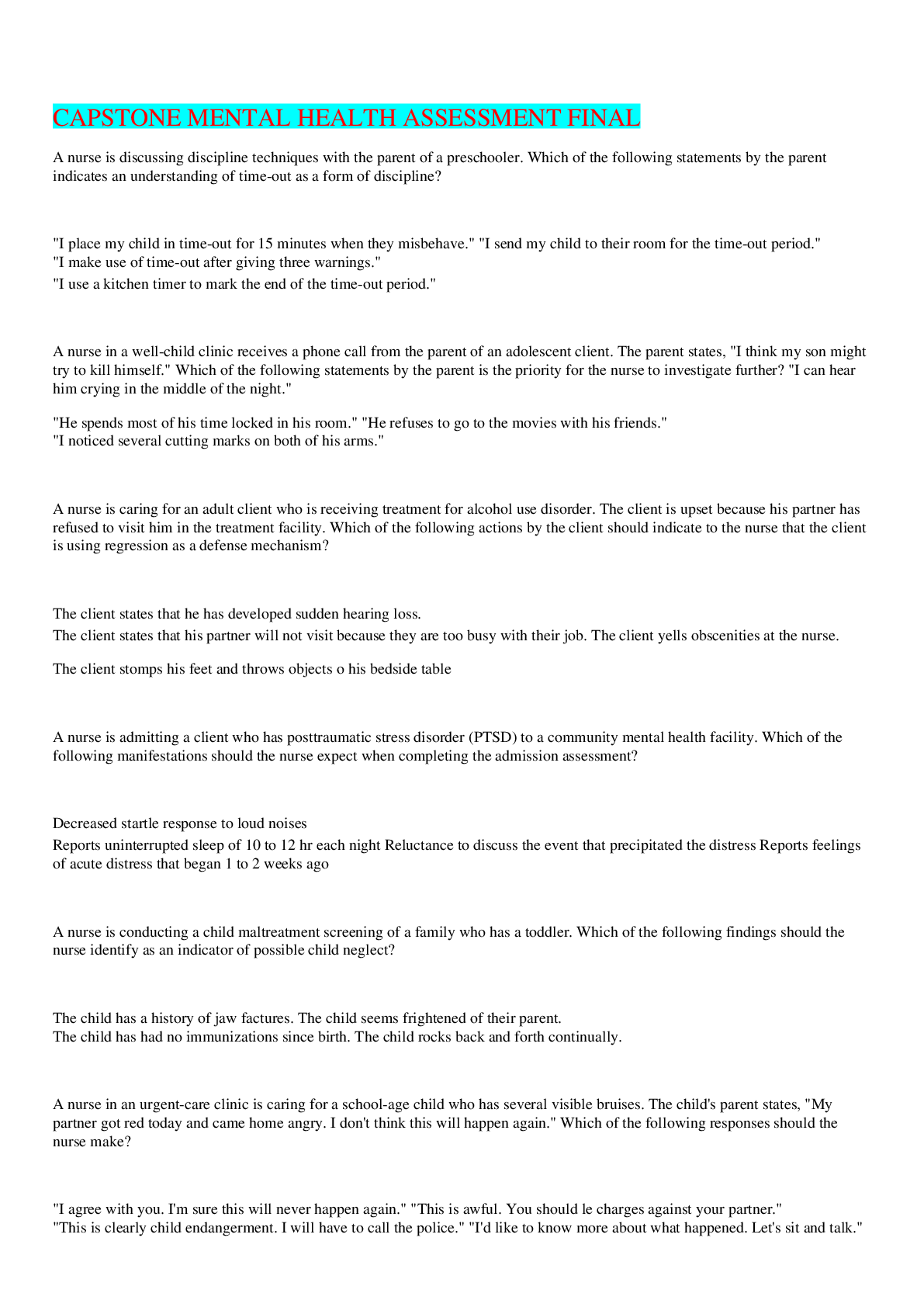Art > EXAM > ART HISTORY I - SOPHIA LEARNING - UNIT1 CHALLENGE 1 QUESTIONS AND ANSWERS,100% CORRECT (All)
ART HISTORY I - SOPHIA LEARNING - UNIT1 CHALLENGE 1 QUESTIONS AND ANSWERS,100% CORRECT
Document Content and Description Below
• a.)He invented the Renaissance in Italy. • b.)He was the first individual to formally document works of art. • c.)He was the first to propose the idea of a regional or national style to art.... What was one of Pliny the Elder's important contributions to the development of • a.)He was the first to associate art with its cultural context. • b.)He was the first to take a biographical approach to art history. • c.)He was the first to see "Dark Ages" as a period of artistic decline. What was one of Giorgio Vasari's important contributions to the development of • a.)He was the first to associate art with its cultural context. • b.)He saw the Classical and Renaissance periods as periods of artistic achievement. • c.)He was the first historian to discuss art in detail. . Which of the following statements about an artist is true? • a.)An artist who is exceptionally talented at creating works of aesthetic value is known as an art historian. • b.)An artist who is exceptionally talented at creating works of aesthetic value is known as a genius. • c.)An artist who is exceptionally talented at creating works of aesthetic value is known as a connoisseur. • d.)An artist who is exceptionally talented at creating works of aesthetic value is known as a scholar. Which of the following statements about an artist is true? • a.)An artist's collective body of work is known as an oeuvre. • b.)An artist's collective body of work is known as a masterpiece. • c.)An artist's collective body of work is known as a gallery. • d.)An artist's collective body of work is known as a canon. Which of the following statements about an artist is true? • a.)The western idea of an artist doesn't exist in every culture. • b.)Every artist is a genius. • c.)The role of the artist is more or less the same in all cultures. • d.)Artwork can only be evaluated if the artist is known. • b.)Incorrect. A genius is an exceptionally talented, knowledgeable, or creative person. This does not apply to all artists. How is a work of art different than an artifact? • a.)An artifact is an object made by a human being and is of historical or cultural interest, and a work of art just looks nice. • b.)An artifact is an object of outstanding skill or artistry, and a work of art is an object designed only for its aesthetic appeal. • c.)An artifact is an object made by a human being, and a work of art is an object made by an artist. • d.)Both are made by human beings; however, a work of art is especially designed for its aesthetic appeal, or is an object that has come to be appreciated as a work of art. . Which of the following best defines originality as it relates to works of art? • a.)The idea that a work of art is the result of an artist's unique vision, and not of outside influences. • b.)A fresh artistic approach to an old artistic idea. • c.)The idea that all artwork is in some way influenced by other works of art, except ancient works of art. Which of the following best describes a masterpiece? • a.)A work of marginal skill or artistry. • b.)A work of outstanding skill or artistry. • c.)A work of art made by a master. • a.)King Philip IV of Spain and Donatello • b.)Pope Julius II and Raphael • c.)Richard I of England and Leonardo da Vinci • d.)Emperor Constantine I and Raphael Which of the following is a modern form of patronage? • a.)The Tate Museum • b.)The Nobel Peace Prize • c.)The National Endowment for the Arts • d.)The Museum of Modern Art (MOMA) Which of the following is the best description of how patrons have influenced the • a.)Patrons sell works of art, providing income for artists and allowing them to produce more works of art. • b.)Patrons only ever provide money for the production of works of art, and always leave it to the artists to decide on the subject matter of the artwork that's produced. • c.)Patrons had a major influence on works of art during the Middle Ages in Europe, but weren't that influential on works of art during the Renaissance. • d.)Patrons commission works of art for production, and influence the design of the artwork based on their personal preferences. Select the true statement about New Art History. • a.)Traditional art history focused more heavily on formal analysis, while New Art History heavily emphasizes connoisseurship. • b.)The canon of art history is an evolving body of works of art. As time progresses, the canon of art history continues to be added to. • c.)Traditional art history focuses on Western art and New Art History focuses on non- Western art. • d.)New Art History developed as a way to isolate analysis of a piece of art to focus solely on its physical characteristics. Select the true statement about New Art History. • a.)New Art History developed because traditional art history wasn't very useful when analyzing classical works of art. • b.)New Art History was the only way to analyze new works of art that emerged during the 19th and 20th centuries. • c.)New Art History developed because traditional art history was only useful in analyzing works of art created outside of Europe. • d.)New Art History developed because traditional art history was limited in its ability to fairly critique and analyze emerging art forms of the 20th century. • Select the true statement about New Art History. • a.)New Art History emphasizes connoisseurship, while the traditional art history approach emphasized using art as a form of social activism. • b.)New Art History is a revisionist approach to art history that emerged during the 1800s, and discredits earlier methodologies or approaches to art history. • c.)New Art History involves a revisionist approach which emerged during the 1970s and questions earlier methods, while connoisseurship relies on recognition of elements of an artist's personal style. • d.)New Art History and traditional art history share the same canon. • d.)Incorrect. New Art History questions the methodologies and approaches of traditional art history, so traditional works of art do not fall into the New Art History canon. Select the statement that describes art history. • a.)Kelly critiques a work of art based only on the visual characteristics of the piece. • b.)Miguel likes the work of art he sees hanging in a museum, but is not interested in the history of the piece. • c.)Marta considers the context and larger meaning of a work of art that she finds appealing. • d.)Casey relies only on concepts like composition, knowledge of color, and geometry to understand a work of art. Select the statement that describes art appreciation. • a.)Matthew examines a painting from ancient Roman times, and thinks about how religion or politics of the time may have influenced the artist's choices. • b.)Maggie enjoys how her favorite painting looks, but wants to better understand the history behind it. • c.)Katherine examines a piece of art from the 1600s, and thinks about what else was going on in society at the time that may have influenced the artist. • d.)Derek doesn't really understand the story behind a piece of art his wife bought, but he thinks it looks nice in their living room. • a.)Incorrect. You are thinking of art history, which tries to understand a work of art in its wider social or historical context. Art appreciation means assessing a work of art based on how it looks rather than considering its wider context. Select the statement that describes art appreciation. • a.)Sam studies a work of art to consider the larger social context involved. • b.)While studying a painting depicting a war, Theresa considers how religion and politics had an effect on how the artist illustrated the scene. • c.)Erin strives to understand the story behind a work of art she was drawn to. • d.)Emily enjoys a work of art she sees at a museum without considering its context or history. Which of the following is a technique for analyzing works of art? • a.)Art appreciation • b.)Cultural studies • c.)Understanding context • d.)Patronage Which of the following best describes formal analysis? • a.)Understanding works of art by considering their physical qualities • b.)Understanding works of art by considering their religious qualities • c.)Understanding works of art by considering the experience of the artist • d.)Understanding works of art by considering their philosophical qualities • b.)Connoisseurship • c.)Contextual analysis • d.)Formal analysis [Show More]
Last updated: 1 year ago
Preview 1 out of 8 pages
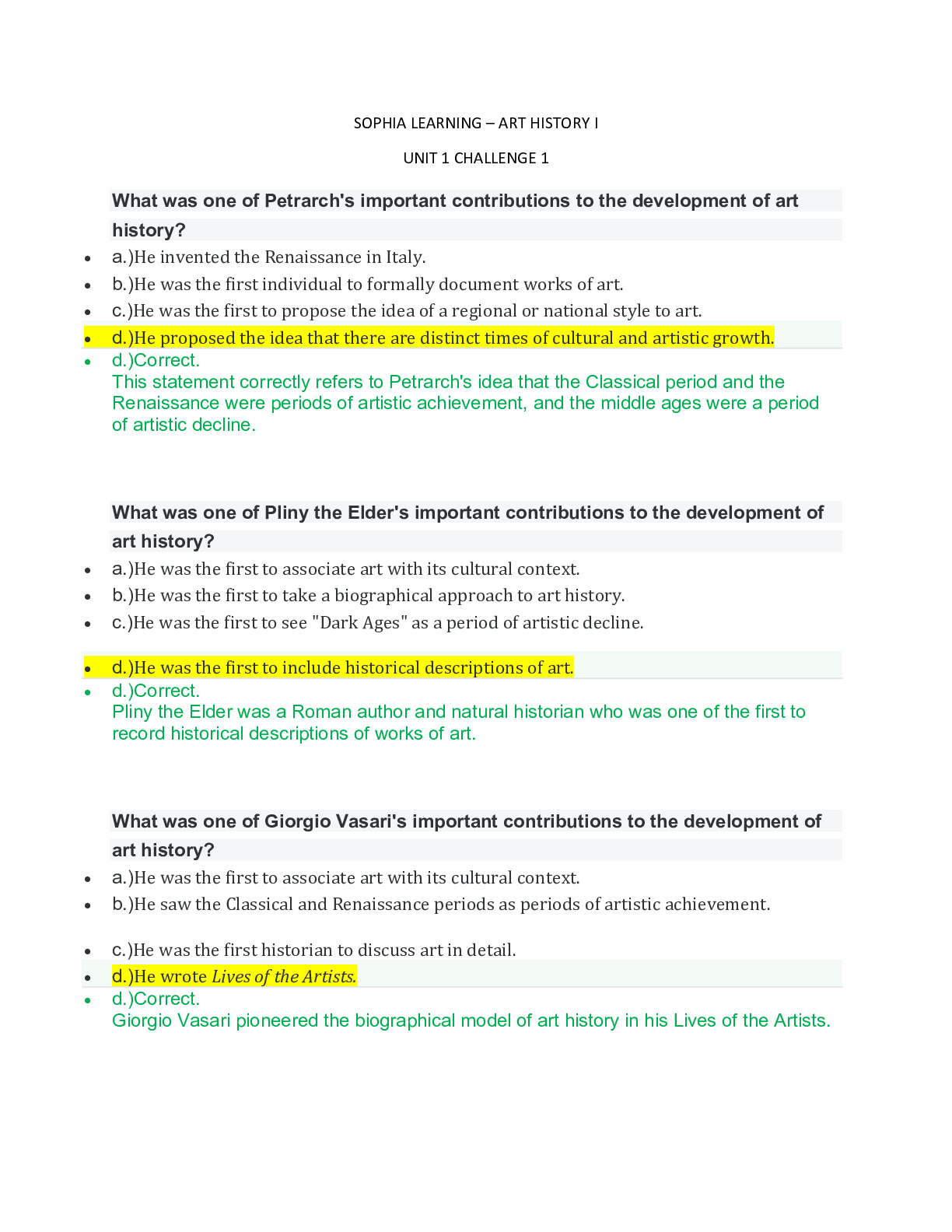
Reviews( 0 )
Document information
Connected school, study & course
About the document
Uploaded On
Oct 20, 2020
Number of pages
8
Written in
Additional information
This document has been written for:
Uploaded
Oct 20, 2020
Downloads
0
Views
157




